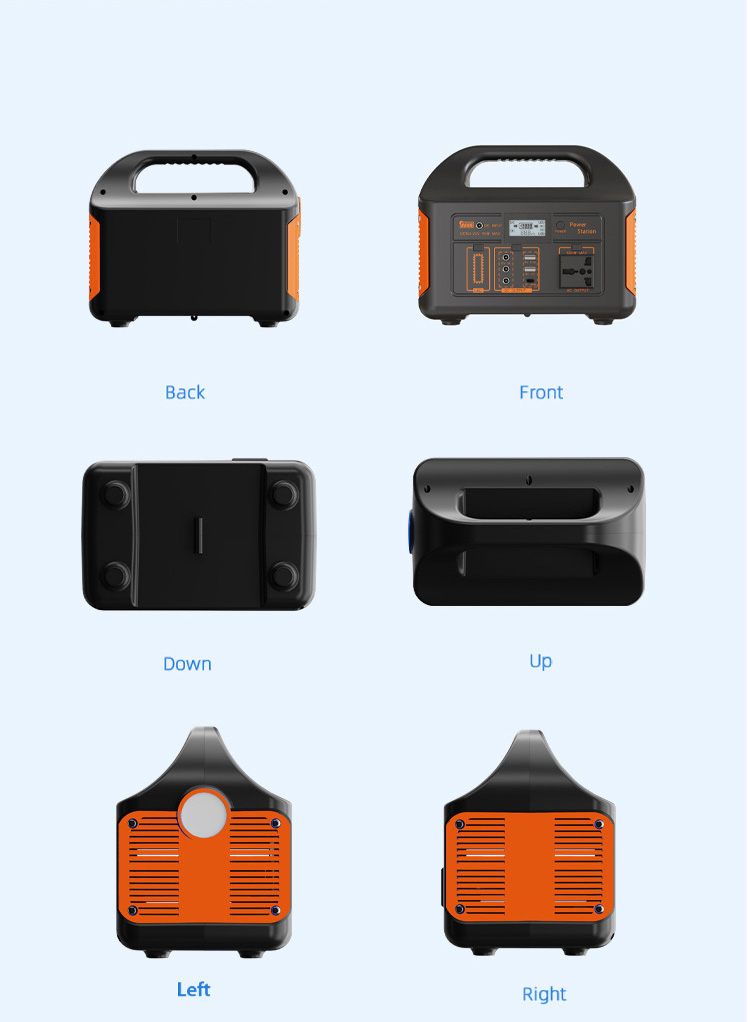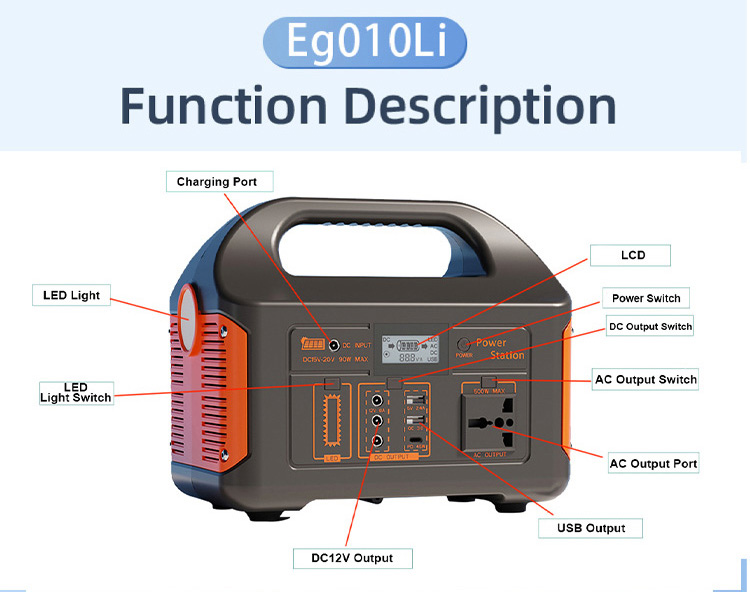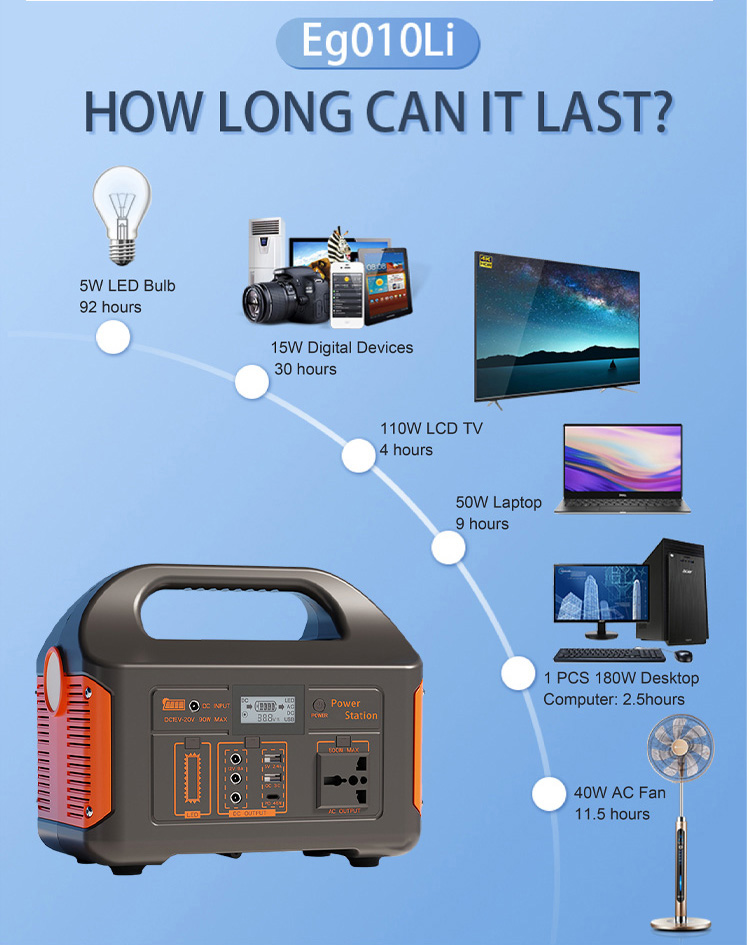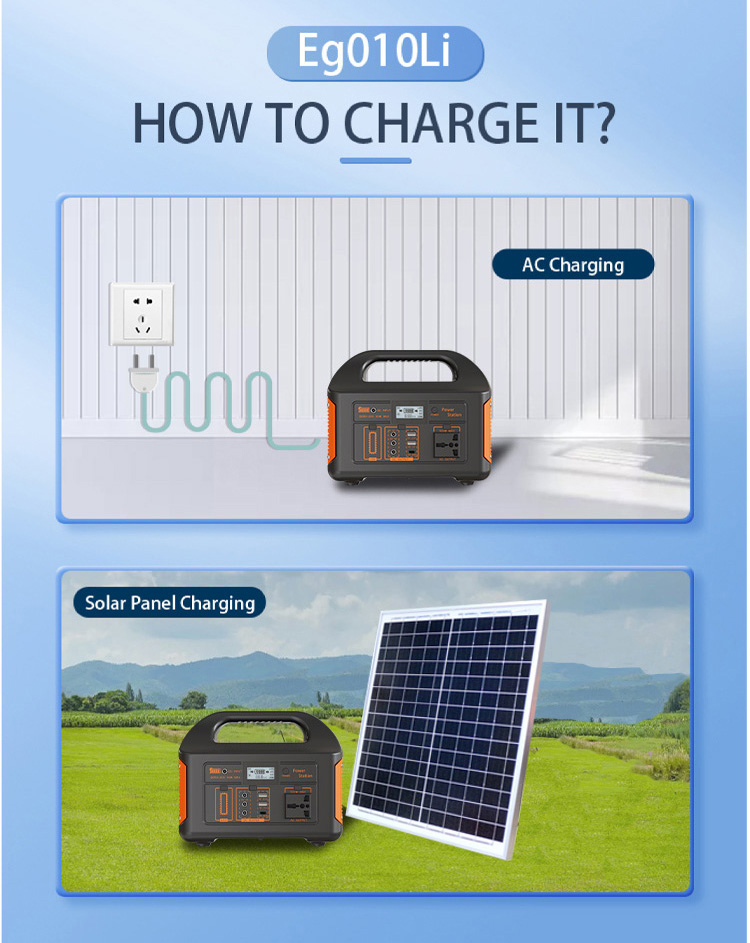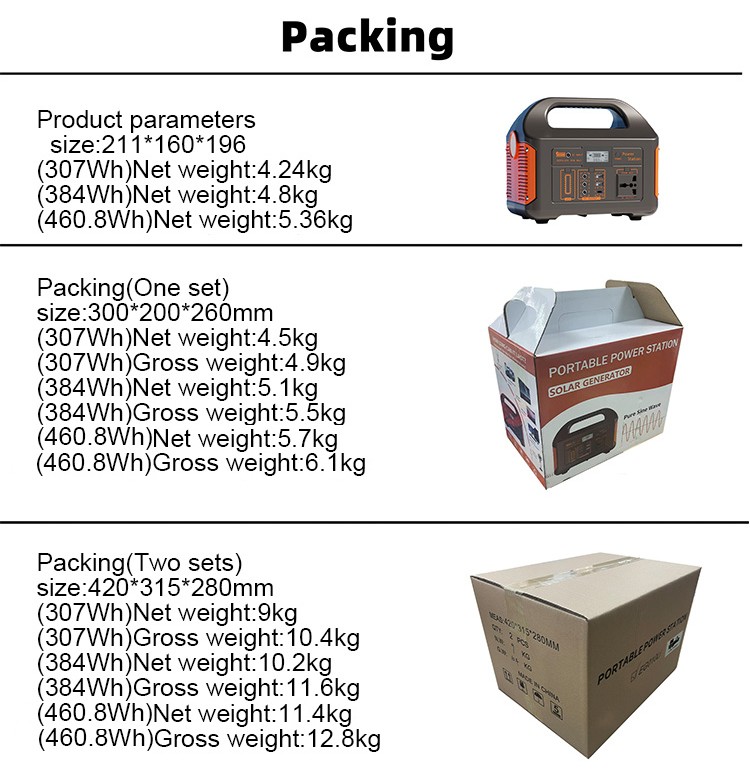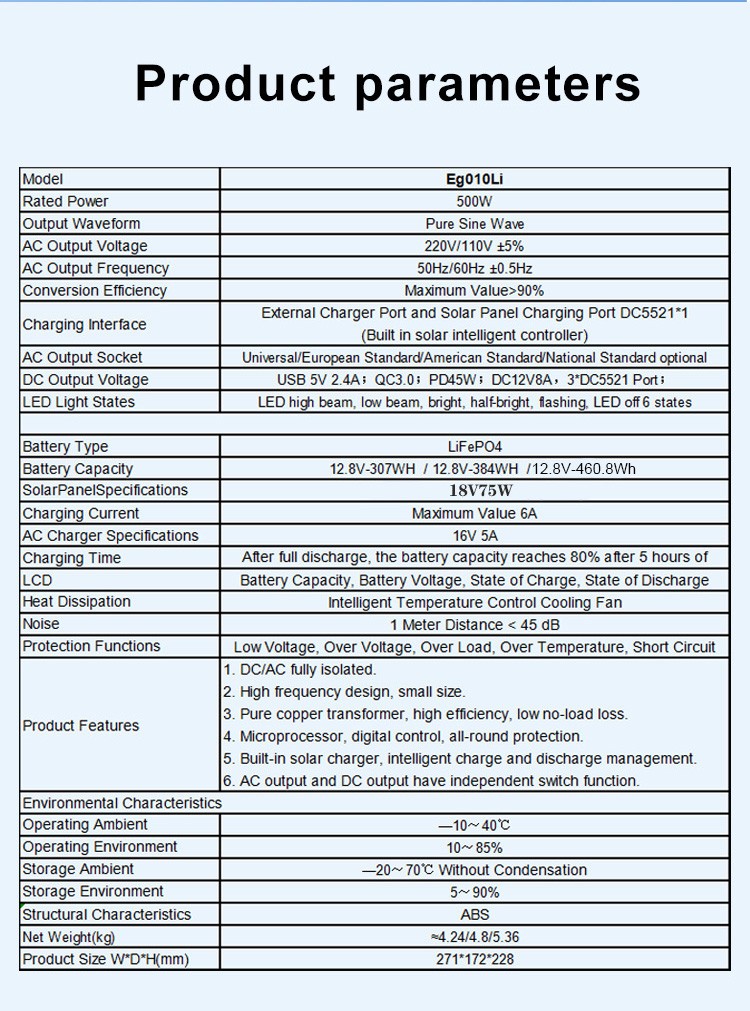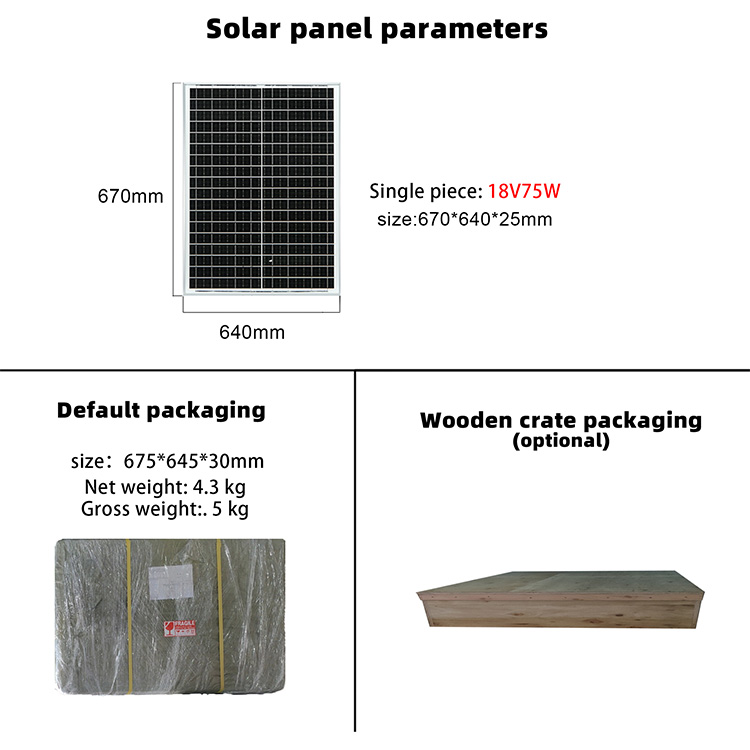
What is the conversion relationship between the "nominal capacity (Ah)" of a portable power station and the "actual output energy (Wh)" of the power supply? Why
Jul. 22, 2025
1. Conversion relationship between nominal capacity (Ah) and actual output energy (Wh)
1. Basic conversion formula (from battery capacity to theoretical energy)
Nominal capacity (Ah) is the unit of charge stored in the battery, and actual output energy (Wh) is the unit of energy that can be released to the outside. The two are related through battery voltage. The core formula is:
Battery theoretical energy (Wh) = nominal capacity (Ah) × battery pack nominal voltage (V)
·Nominal capacity (Ah): refers to the total charge of the battery pack (such as 50Ah), which is determined by the series and parallel connection of the battery cells (for example, 10 5Ah battery cells in parallel form 50Ah);
·Battery pack nominal voltage (V): formed by multiple battery cells in series (such as 3.2V lithium iron phosphate battery cells, 16 strings are 51.2V; 3.7V ternary lithium battery cells, 14 strings are 51.8V).
For example: a power supply is marked "50Ah/51.2V", then the theoretical energy of the battery is 50Ah × 51.2V = 2560Wh.
2. Further calculation of actual output energy
The energy that users can finally use (actual output energy) is not the theoretical energy of the battery, but the result after energy conversion efficiency and battery protection mechanism, that is:
Actual output energy ≈ battery theoretical energy × battery available discharge depth × energy conversion efficiency
II. Reasons why the actual output energy is lower than the theoretical value
1. Energy conversion loss (the most important factor)
The power supply needs to convert the direct current (DC) of the battery into output forms of different interfaces (such as AC, low-voltage DC) through the circuit, and there are inevitable losses in the process:
·AC interface (220V AC): Depends on DC-AC inverter, the efficiency is usually 80%-90% (lower efficiency at light load, such as 100W load may drop to 70%). For example, after the theoretical energy of a 2560Wh battery is converted with 85% efficiency, the actual AC output is about 2560×85% = 2176Wh;
·DC/Type-C interface: Through a DC-DC converter, the efficiency is higher (90%-95%), but there is still a 5%-10% loss.
2. Battery discharge depth limit
To protect the battery (avoid over-discharge leading to shortened life or damage), the BMS (battery management system) will limit the discharge depth, usually only allowing 80%-90% of the total capacity to be released (reserving 10%-20% margin). For example, a 50Ah battery can actually discharge 40-45Ah, which directly leads to a 10%-20% reduction in available energy.
3. Impact of load characteristics
·Low load efficiency reduction: When the load power is much lower than the rated power of the conversion module (such as using a 1000W inverter to power a 10W device), the conversion efficiency will be greatly reduced (may be as low as 50%), resulting in serious energy waste;
·Inductive load impact: When inductive loads such as motors and refrigerators start, they require an instantaneous current of 3-5 times the rated power, which may trigger power overload protection (power reduction or shutdown), resulting in a shortened actual output time.
